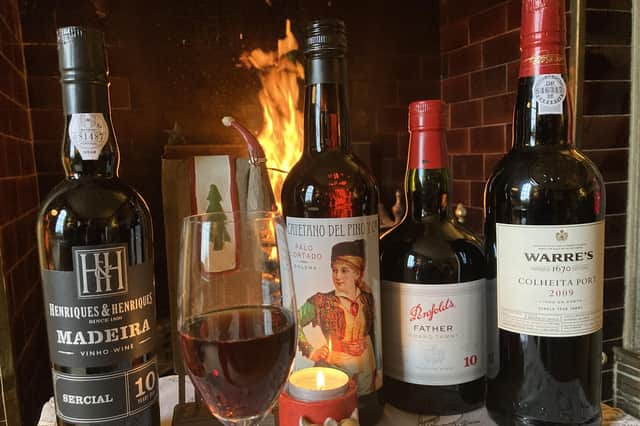Fortified wines to sip on wintry days: Richard Esling, December 15


With many puzzled as to exactly how they are made, fortified wines come into their own in the festive season and are particularly suited to winter days and nights, curled up in an armchair or sipped after dinner with friends.
In fact, it is one of two categories of wine which have seen an uplift in their fortunes during the pandemic. Champagne sales have been greater in 2021 than in 2019 – before the pandemic had begun to wreak its havoc and fortified wine sales have similarly risen in the last two years. The reasons behind these increases are varied, but certainly in part due to a desire to treat oneself in times of adversity.
Advertisement
Hide AdAdvertisement
Hide AdThe term fortified refers to the addition of neutral grape spirit to either a fully fermented or partially fermented wine. The great majority of the world’s top fortified wines originate from either Spain or Portugal, being the wines of sherry, port or madeira. These styles have inspired winemakers in other countries to produce their own versions. I have selected three different fortifieds, all slightly different to the more usual examples encountered on merchants’ shelves.
The first of these is the driest of the three, a much rarer style of sherry and my personal favourite. Cayetano Del Pino Palo Cortado is an excellent example of this style, with elegance, depth and length. Although dry, it has flavours of Christmas cake, with dried apricots, sultanas and hazelnuts on the nose, intense flavours on the palate with complexity and long finish. Excellent value at £14.95 from The Wine Society.
My second wine is Henriques and Henriques Sercial 10 Years Old which is a drier style of madeira, far drier than the normal Malmsey Madeira. Amber coloured, it is crisp, smooth and nutty, with flavours of spice and candied orange peel. A salty, citrus tang with vibrant acidity blends with the complex flavours developed by 10-year ageing. £20 for a 50cl bottle again from The Wine Society. Surprisingly good with spicy soups, mild blue cheese and marmite on toast!
The third wine of my chosen eclectic three is a different version of the classic Portuguese Tawny Port. This is not the sort of port to have with a chunk of crumbly, mature Cropwell Bishop, but one to savour after dinner with dried fruit and nuts, round the dinner table or by the fireside in your favourite armchair. Penfolds Father Tawny is produced in South Australia and aged for 10 years by the top winemaker Penfolds, one of the largest producers of fortified wines in Australia.
Advertisement
Hide AdAdvertisement
Hide AdEstablished in 1844, Penfolds has a long pedigree of fine winemaking, understanding the different techniques for making and ageing fortified wines. Careful selection of ripe fruit in the vineyards, followed by equally careful selection of low strength grape spirit is key. Maturation is then of great importance, taking place in seasoned old oak hogsheads, to create integration and complexity.
Penfolds Father Grand Tawny has an attractive mid amber colour, with aromas of muscatel raisins, candied orange rind and caramel. A rich and expressive sweetie with a nutty, sultana flavour and satisfyingly long finish. £24.99 from Majestic (£19.99 mix six price). Uniquely Australian, its vitality derives from blended fruit from shiraz, mourvèdre, cabernet sauvignon and grenache. Delicious alternative to the tawnies of Portugal, try a glass with mince pies.
Richard Esling is a wine consultant, agent, writer and educator. He runs agency and consultancy WineWyse, is founder and principal of Sussex Wine Academy and is chairman of Arundel Wine Society
Comment Guidelines
National World encourages reader discussion on our stories. User feedback, insights and back-and-forth exchanges add a rich layer of context to reporting. Please review our Community Guidelines before commenting.